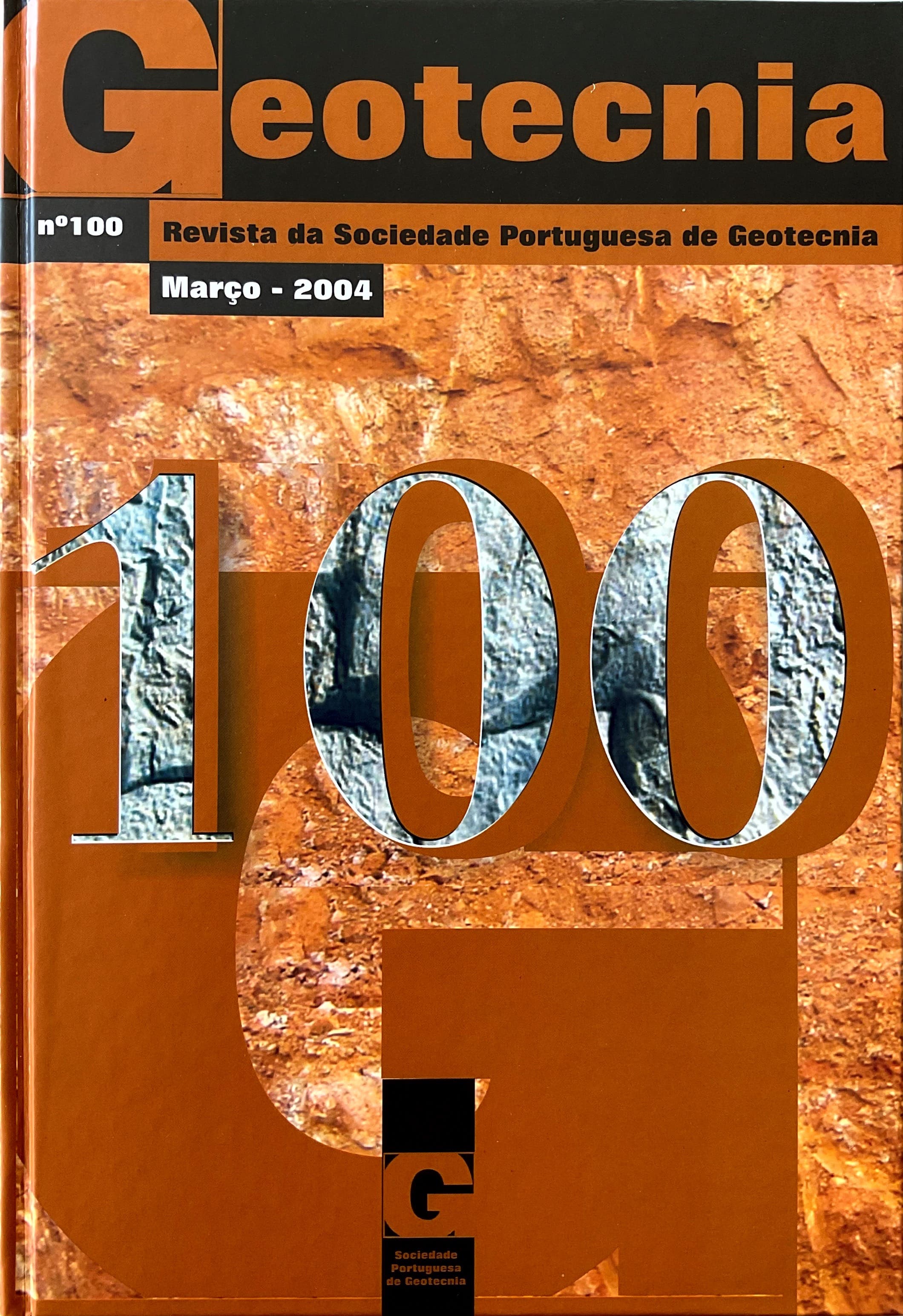Uma solução analítica para a propagação de ondas em barras cónicas aplicável à medição da resistência à tracção dinâmica de materiais sólidos
DOI:
https://doi.org/10.14195/2184-8394_100_8Palabras clave:
Ensaios laboratoriais, Ondas elásticas, Resistência à tracção dinâmicaResumen
Apresenta-se um estudo sobre a propagação de ondas elásticas de tensão em barras cónicas e tronco-cónicas de comprimento finito, com o objectivo de desenvolver uma solução analítica para os estados de tensão que se manifestam quando determinado impacto e aplicado sobre a base da barra, caminhando em direcção ao seu vértice.
O método é baseado na sobreposição de ondas longitudinais que se propagam no núcleo cilíndrico da barra e de ondas reflectidas (longitudinais e transversais) que são criadas junto à superfície lateral do cone, de modo a permitirem determinar o estado de tensão em qualquer secção circular do interior da barra.
Verifica-se que dessa sobreposição se geram tracções transientes suscetíveis de conduzir a ocorrência de fragmentos cónicos, cujas dimensões permitem determinar a resistência à tracção dinâmica do material que constitui a barra. Exemplifica-se a aplicação do método com resultados de ensaios laboratoriais.
Descargas
Citas
Abrate, S. (1995). Vibration of Non-uniform Rods and Beams. J. of Sound and Vibration. Vol. 185, pp. 703-716.
Barr, A.D.S. (1962). Torsional Waves in Uniform Rods of Non-circular Section. J. Mechanical Engineering Science, Vol. 4, pp. 127-135.
Bell, J.F. (1873). The Experimental Foundations of Solid Mechanics. Springer Verlag, Berlin.
Davies, E. D. H. e Hunter, S. C. (1963). The Dynamic Compression Testing of Solids by the Method of the Split Hopkinson Pressure Bar. J. Mechanics Physics of Solids, Vol. 11, pp. 155- 179.
Eberhard, P.; Hu, B. e Schiehlen, W. (2000) Longitudinal Wave Propagation in Conical Rods Subject to Impacts. Multifield Problems, State of the Art.pp. 246-253. Springer, Berlin.
Gaines, J. H. e Volterra, E. (1966) Upper and Lower Bounds of Frequencies for Cantilever Bars of Variable Section. J. Applied Mechanics, Vol. 33, pp. 948-950.
Graff, K. F. (1975) Wave Motion in Elastic Solids. Oxford Press: Clarendon.
Hillig, W. B. (1985) Response of Polycarbonate, Polymethylmethacrylate and Epoxy Resins to Dynamic Contact. Polymer Engineering Science, Vol.25, pp. 339-347.
Hopkinson, B. (1914) A Method for Measuring the Pressure Produced in the Detonation of High Explosives or by the Impact of Bullets. Phil. Transactions Royal Society, London, A213, pp. 437-456.
Hu, B.; Eberhard, P. e Schiehlen, W. (2001) Symbolical Impact Analysis for a Falling Conical Rod against the Rigid Ground. Journal of Sound and Vibration, vol. 240(1), pp. 41-57.
Kolsky, H. (1963) Stress Waves in Solids. Dover Publications, New York.
Meek, J. W. e Wolf, J. P. (1962) Cone Models for Homogeneous Soil (part I), Cone Models for Rigid Rock (part II). Journal of Geotechnical Engineering, ASCE, Vol.118, No.5, pp. 667-703.
Morse, R. W. (1948) Dispersion of Compressional Waves in Isotropic Bars of Rectangular Cross Section. J. Acoustical Society of America, Vol.20, pp.833-838.
Pochhammer, L. (1876) Uber Fortpjlanzungsgeschwindigkeiten Kleiner Schwingungen in einen Unbegrenzten Isotropen Keiszylinder. J. Reine Angew. Math, 81, pp. 324- 336.
Zhao, H. e Gary, G. (1995) A Three Dimensional Analytical Solution of the Longitudinal Wave Propagation in an Infinite Linear Viscoelastic Cylindrical Bat: Application to Experimental Techniques. J. Mechanics Physics of Solids, Vol. 43, pp. 1335-1348.




